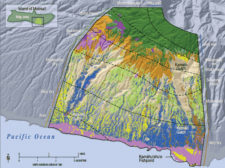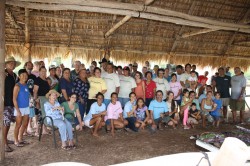Water Conservation and Irrigation Workshop
UH CTAHR Molokai Extension News Release
There aren’t too many things in Hawaii we measure in the billions. The size of the state’s economy is about $67 billion, the volcano at the Hawaii Volcano National Park produces about 6.4 billion cubic feet of lava per day and the 100-acre Molokai Irrigation System reservoir has a storage capacity of 1.2 billion gallons. But if we want to see 50 percent of Molokai that is dry almost all year round to green up, it will require 389.6 billion gallons of water per year. That is because Molokai has the highest recorded annual average pan evaporation rate in the state, at 118 inches per year according to historic data in DNLR reference “Pan Evaporation: State of Hawaii 1894-1983.” …














